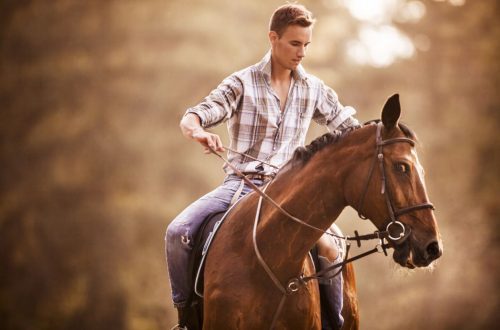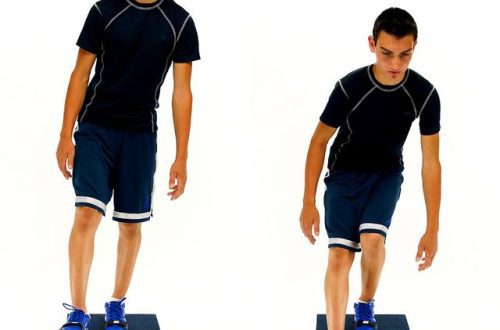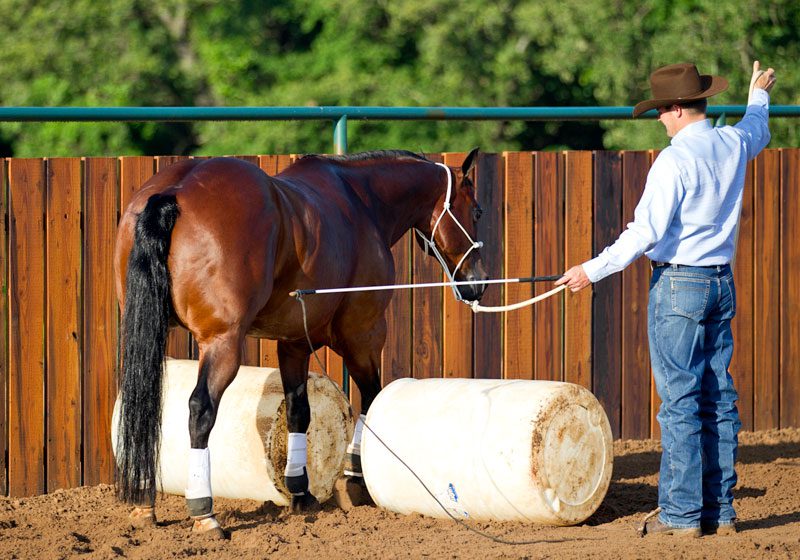
Point of View: Horse Jumping with Clinton Anderson
Point of View: Horse Jumping with Clinton Anderson
By using this exercise, you will teach your horse to confidently navigate obstacles, both natural and man-made. Giving your horse a goal will make training more fun and interesting for both of you, and will increase your horse’s trust and respect for you. Repeated daily work on the same thing leads to the fact that many horses become lazy and boring. When you introduce overcoming obstacles into training, the interest and engagement of the horse will increase significantly.
A great way to familiarize your horse with an obstacle is to use plastic barrels. Lay two barrels on the ground end to end. The distance between them should be about 1,80 m. One barrel should be placed against the wall of the arena or the fence of the parade ground so that the horse cannot run around the obstacle from the corresponding side.
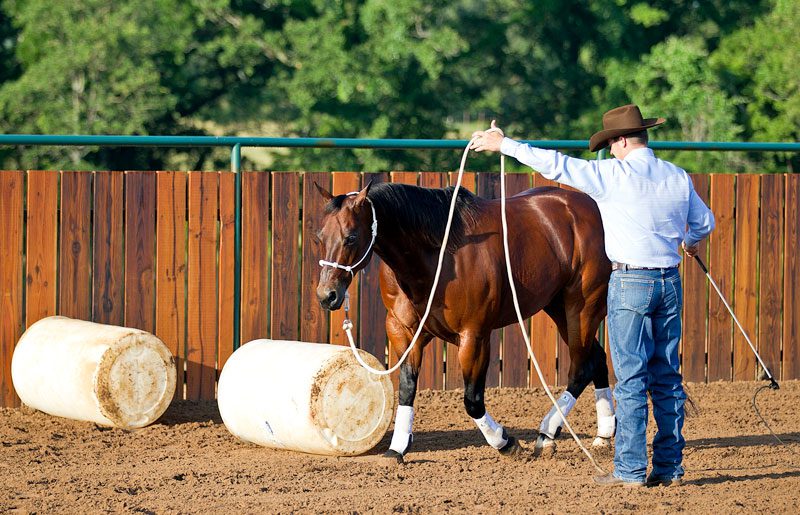
1. Before you lead your horse over any obstacle, always ask him to walk between him and you from the sides where it is possible to do so. It’s a little test: if you can’t get your horse to go between you and an object, you can never get it to go through or jump over it. Stand about three meters from the barrels and guide the horse between you and the obstacle, staying in one place. Ask her to remove her butt and turn towards you. Then send her between you and the barrels again. Practice this until the horse is calmly walking or trotting between you and the barrels. Do this on all three sides of the barrels.
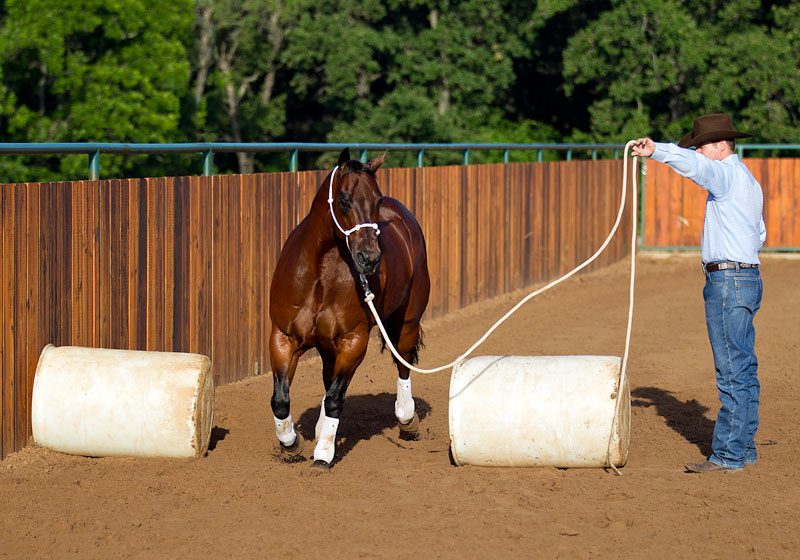
2. Stand close to the barrel to block the horse if it tries to get around the barrels. Then, using approach and retreat, send the horse between the barrels. First, when you sent the horse between the barrels, he will probably stop and try to rein back from them., because in this situation she may feel insecure. The trick is to stop her before she wants to stop. Stopping should always be your idea. So, if you expect a horse to stop eight paces from an obstacle, stop it at nine. Then take the horse away from the barrels. Then ask her to go to them again, and before she stops, take her away. Every time you send your horse forward towards the barrels, try to get him to come closer to them.
Council: if your horse wants to sniff or explore the obstacle, let him do it. Horses sometimes have to do their own security check before they can safely comply with your request.
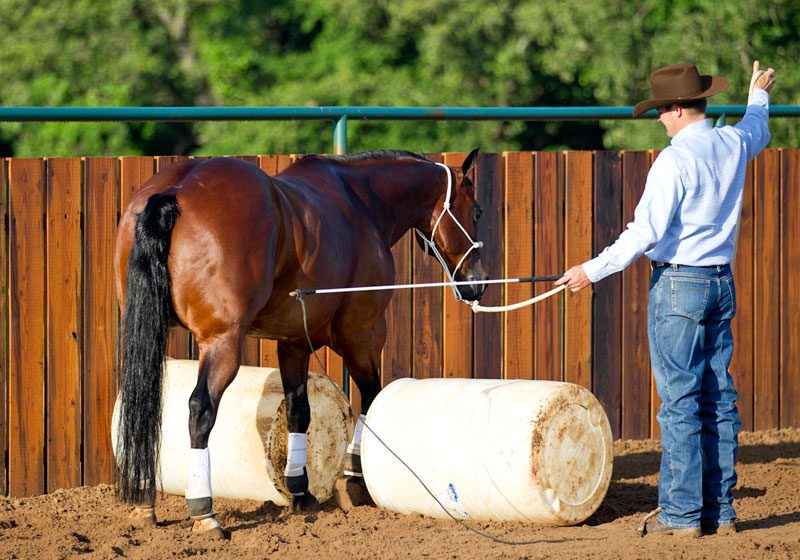
3. As the horse walks calmly and confidently in the corridor between the barrels, gradually bring them closer to each other, making the gap smaller. Eventually the horse will have no choice but to jump over the barrels. You will know that the horse is moving confidently through the corridor when you can point the hand holding the lead in the right direction, and the horse will go forward without hesitation, in a calm trot or walk.
4. Don’t act like a predator. If the horse comes up to the barrels, hesitates, and leans forward right on the edge of the transition, do the opposite of what you would like to do (put more pressure on him) – move the horse away from the barrels. Don’t try to force drive it to the jump or into the corridor – just wait until the horse finds the right answer. It is critical to apply pressure in a timely manner. Never put pressure on a horse when he is investigating or intending to explore an obstacle! Instead, if your horse is reluctant to go to the barrels, push him with the whip when he has already passed them – this will create energy from the back.
5. As soon as the horse jumps over the barrels, hold him on the circle in the same direction. Let her get comfortable with jumping to one side before asking her to do it on the other side.
If your horse has did not jump, do not be surprised that her jump will be with a large margin. Once she gets the hang of it and gets used to it, she will realize that she doesn’t need to jump 1,20 high to jump over such a low hurdle.
Usually horses get excited when you ask them to do something new. Your horse may lie in the lunge for a bit and start running in circles – just give him the opportunity to relax and calm down.
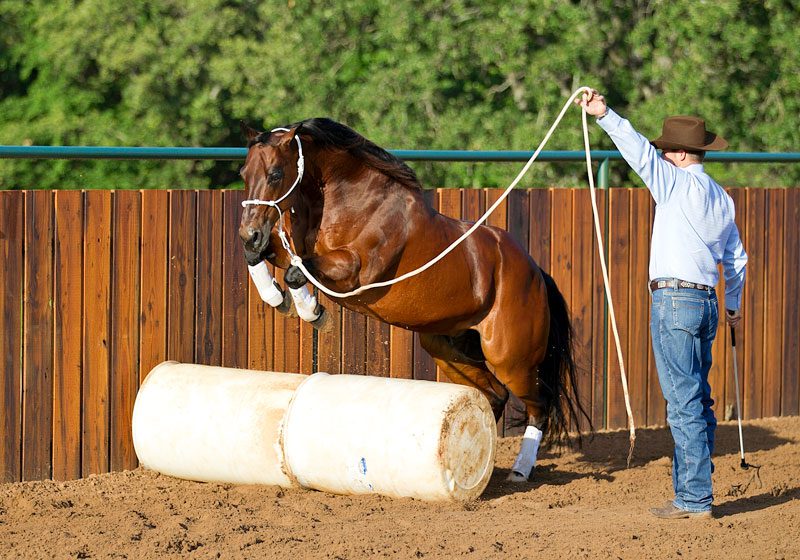
6. When your horse is confident barrel jumping from any direction, try jumping back and forth. You can make the barrels a more “serious” challenge by covering them with tarps, painting them brightly, etc. Your greatest asset in training is your imagination. The more creative you can be in training your horse, the better he will fulfill your requests and the more he will enjoy his work.
Clinton Anderson (source); translation Valeria Smirnova.



